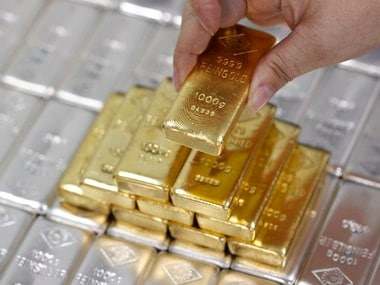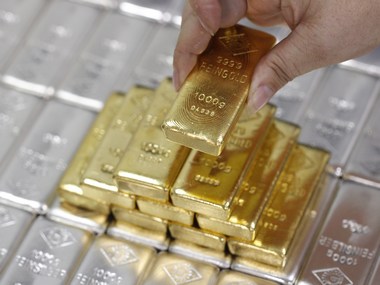Shanmuganathan “Shan” Nagasundaram Close on the heels of the first phase of Gold “deprivitization” scheme so as to wean away purchase of physical gold by citizens, comes the next phase i.e. the Gold Monetization (GM) scheme - to make the hindu temples part with some of their gold holdings. By all accounts, the first one wasn’t a success by any stretch of imagination and so the “imperativeness” for the second step. [caption id=“attachment_2541910” align=“alignleft” width=“380”]  Reuters[/caption] If the objective of the Sovereign Gold Bond Scheme (SGBS) was to wean away fresh purchases of gold, the scheme has to be clearly called a disaster. India purchases around 1000t/annum and the collection of Rs 250 crore under the SGBS accounts for just about 0.1% of the fresh purchases. The RBI /Govt calling this fractional allocation “a success” and “an excellent response” is very amusing. But let’s leave that aside for a moment. Full disclosures first: I am an atheist (actually a nontheist, for the observant reader), principally influenced by Dawkins & Krauss, and so this depositing gold to the Gods doesn’t make any sense whatsoever; more particularly, it demonstrates deplorable financial sense. Maybe there’s a placebo effect, but whatever it is, that’s not what I am here to argue for/against. But purely from the perspective of the devotee who deposited the gold, I presume this act of temples participating in the GM scheme would mean a violation of an “implicit contract” – between the devotee and the deity. This gold deposited was an offering to the deity and not for the purpose of temple using it to meet their operational expenses or for “investing”. But that also is not my argument though certainly an enterprising lawyer should take this up for the reasons outlined below, but using the rationale outlined above. The gold standard In his timeless missive, Gold and Economic Freedom written in 1967, Alan Greenspan had explained why gold is a necessary monetary standard for a free market to function. As he explained therein, in the absence of a Gold Standard, any fiat currency system would have no objective standard of value and would result in an unlimited expansion of credit and populist welfarism. The last few lines of that telling commentary is probably the most relevant and is quoted verbatim – “Deficit spending is simply a scheme for the confiscation of wealth. Gold stands in the way of this insidious process. It stands as a protector of property rights. If one grasps this, one has no difficulty in understanding the statists antagonism towards the Gold Standard (emphasis mine)”. To cut a long story short, the Gold standard is the only sustainable monetary standard and an increasing price of gold simply reflects the bankrupt nature of the fiat currency standard that we have had since 1971. More questions were asked during the 11 year uninterrupted bull run from the year 1999 when gold prices increased from $250/ounce to nearly $2000. This run had to be stopped to convey the impression of stability of the utterly broken financial system. The Western Central Banks have indeed achieved that (much to my surprise though), but at an enormous cost to their physical gold holdings. Hence the imperativeness for the GM scheme today. Why GM is imperative for the Western Central Banks? GM has been launched not keeping India’s interests in mind, but purely under severe western pressure to get additional physical supplies of gold. If we could withstand the CAD and trade deficits under tottering financial conditions a few years ago, there’s no reason why we cannot sustain these today. As to why gold purchases should come under current account is an entirely different matter. In a series of articles by Sprott AMC titled “Do the Western Central Banks have any Gold left?”, they made a case for the annual demand of gold far exceeding mines supply. As they have stated therein, the annual mines supply has been static at around 2700t (excluding China and Russia where the mines production directly goes into the vaults of their respective Central Banks). The annual verifiable demand has been running between 3500 to 4000t at the very least. So we have been running an annual short supply of around 1000t for almost a decade and half now. Where did these additional physical supplies come from to meet the demand? They argue, and with a lot of merit, that the only entity capable of meeting this demand would have to be the western central banks. There is a lot of circumstantial evidence (for example, the US Fed refusing to redeem Bundesbank’s request for their physical gold, RBI leasing 1000t a couple of years ago to the BoE, new huge gold refining capacities being set up when mine supplies are falling, Central Banks not having to distinguish between their physical and leased gold holdings etc) to suggest that supplies have been running pretty tight amidst skyrocketing demand and that the western central banks might really be at the end of the road. Having possibly reached the lower limits of their existing gold holdings, the western central banks would find it hard to suppress the gold prices as they have so effectively done through the futures markets, if they cannot meet the physical demand requirements. So they truly had to turn “to the Gods” for a bailout. Why the gods should refuse There is no reason for India to bailout the western central banks when all they have done is to destroy the world’s basic financial system. The US Fed in particular, using the deservedly earned but long unmerited status as the world’s reserve currency, has enabled the US citizens and government to live way beyond their means without any major consequences. We are indeed at the day of reckoning and the question is whether we tether ourselves to the titanic or does the world cut the umbilical. Cord with the US Dollar? It has to be the latter. India has enough gold in private hands to return to the classical Gold standard and if there’s any monetization that would make sense, that would be it. I am in particular curious of the role of Raghuram Rajan in advocating this SGBS. Is he a conniving participant or is he just a “Useful Idiot” in the larger scheme of the US Fed and BIS? Probably the latter. Shanmuganathan “Shan” Nagasundaram is the founding director of Benchmark Advisory Services – an economic consulting firm. He is also the India Economist for the World Money Analyst, a monthly publication of Mauldin Economics. He can be contacted at shanmuganathan.sundaram@gmail.com
India purchases around 1000t/annum and the collection of Rs 250 crore under the SGBS accounts for just about 0.1% of the fresh purchases
Advertisement
End of Article
Written by FP Archives
see more


)

)
)
)
)
)
)
)
)



